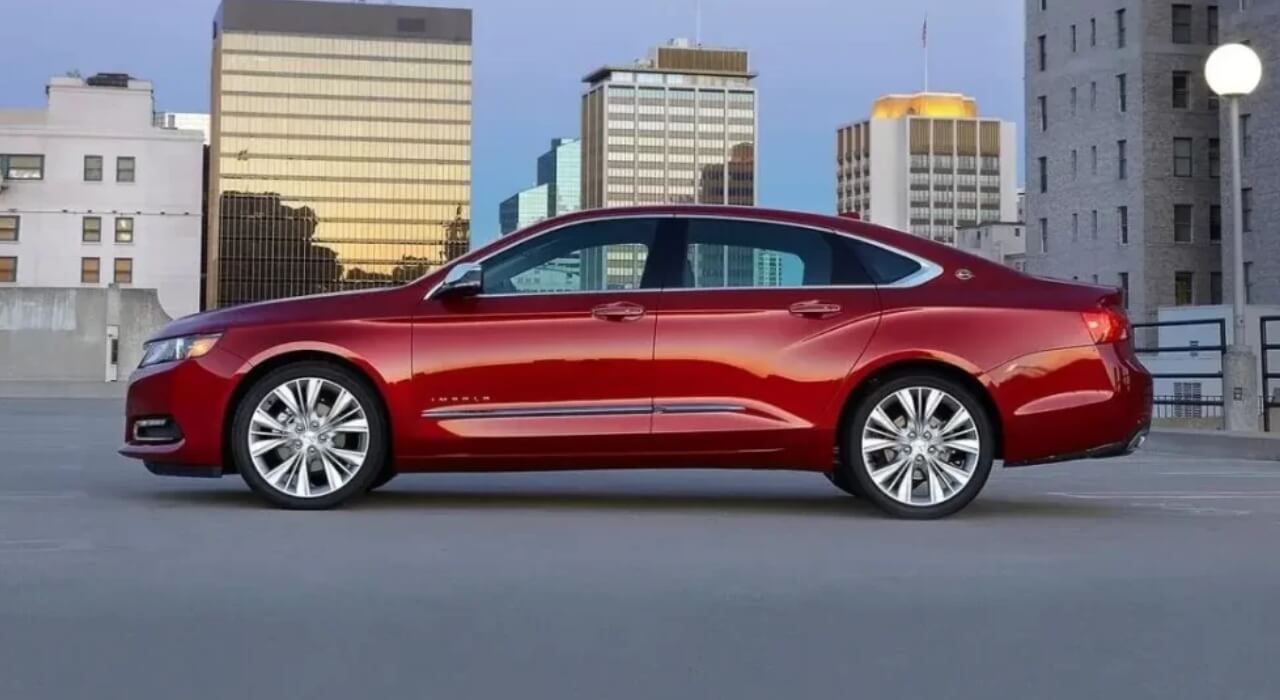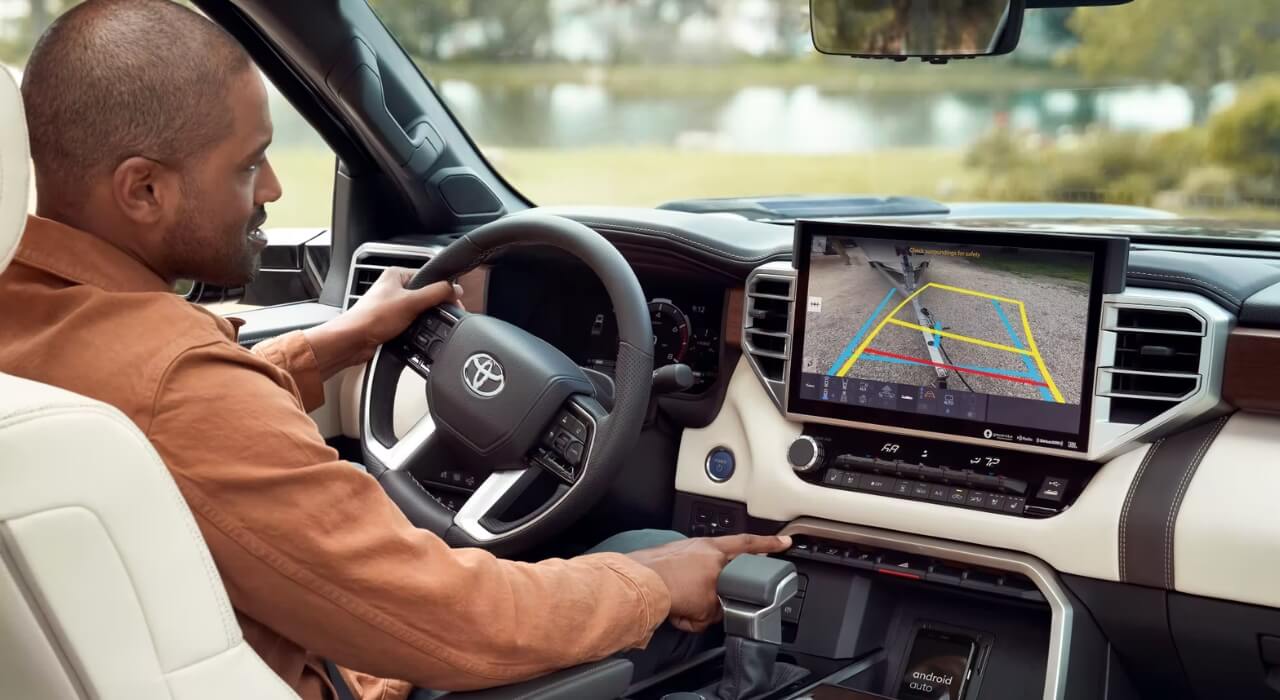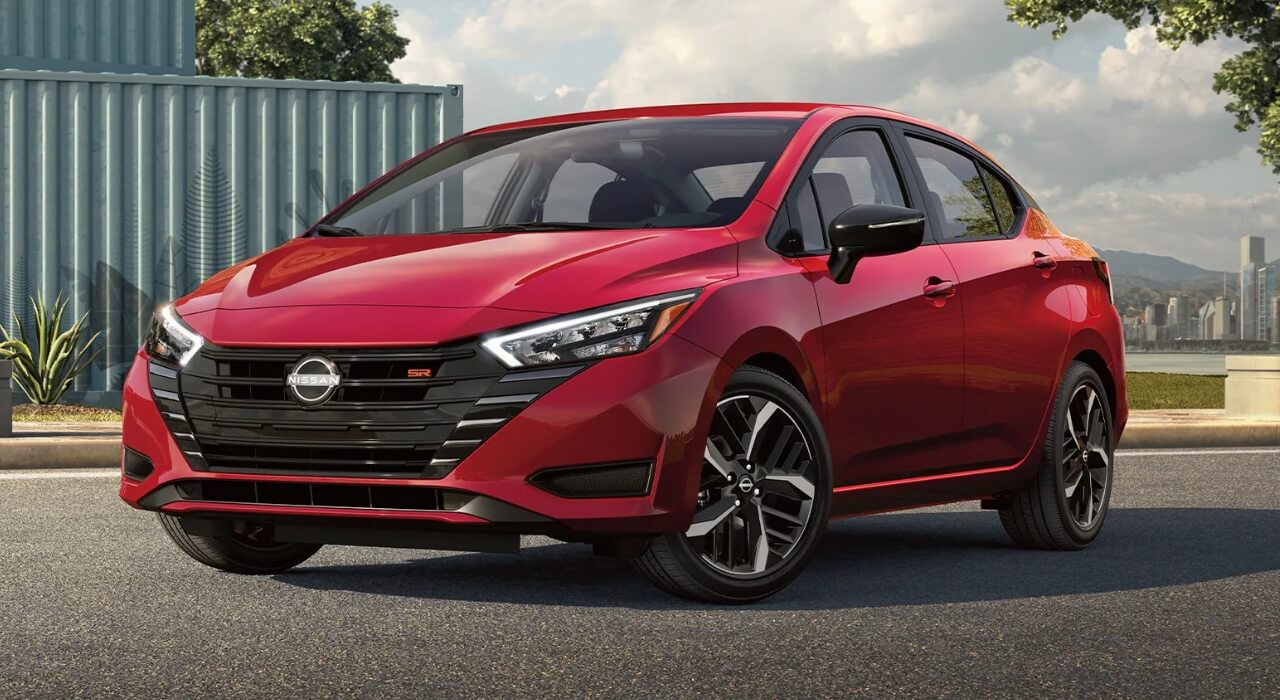If your car’s brake lights won’t turn off even after turning off the vehicle, there could be various reasons behind this issue. Our brake lights serve the critical purpose of preventing accidents by alerting others that our vehicle is slowing down.
When any component within this system malfunctions, it can lead to potentially dangerous situations. Driving with malfunctioning brake lights that fail to illuminate is highly risky, but having them stuck in the “on” position can be just as alarming.
In this article, we will explore the causes of this problem and provide solutions to rectify it. One common cause for brake lights that remain on is a defective brake light switch or sensor. Another possibility could be a faulty brake pedal or an electrical system malfunction.
The problem could be due to incorrect bulbs being installed if you recently replaced the rear light bulbs. It is most likely that one of these problems is responsible for your stuck brake light. Let’s delve into each symptom of a faulty brake light in detail.
Reasons Why Your Brake Lights Stay On While Driving
The most common reason for brake lights staying on is a faulty brake light switch or sensor. It can also be caused by a broken brake pedal or an electrical system fault. It’s possible that the rear light bulbs were incorrectly installed.
Most likely, one of these problems is causing your brake light to stay stuck. Now, let’s examine each symptom of a defective brake light in detail.
A. Defective Brake Pedal Spring
Another potential issue is a worn-out spring in the brake pedal. This spring allows the pedal to return to its original position after release.
When the spring weakens with age, the pedal fails to return, causing the brake lights to stay illuminated. Moreover, it can result in the brake pads remaining engaged, leading to increased wear on the pads and rotors.
B. Stuck Brake Pedal
A worse scenario than a faulty spring is a defective brake pedal itself. If the brake pedal fails to come back up from the floor, the lights will not turn off.
The pedal must return to its original position for the switch to close and the lights to stop working. Otherwise, it will appear as if you are constantly braking.
C. Malfunctioning Electrical System
An electrical system malfunction can affect various components, including brake lights. Such defects can cause the lights to stay on, prevent them from illuminating, or make them function intermittently.
Troubleshooting electrical issues can be complex, so it should only be explored after ruling out other possible causes.
D. Resting Your Foot On The Pedal
This is a relatively common issue. While driving, you softly place your left foot on the brake pedal. Yes, by doing so, you are preparing to use the brakes. That’s not a horrible concept.
However, keep in mind that moving the pedal even a fraction of an inch can activate the brake lights. You should be extremely careful if you often brake with your left foot and your vehicle has an automatic gearbox.
Reasons Why Brake Lights Stay On When Car Is Off
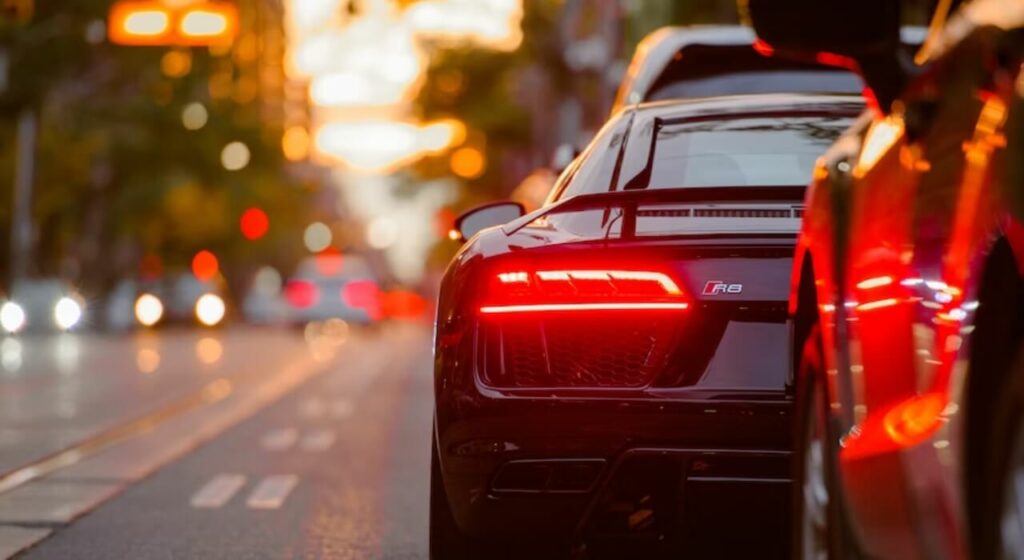
Asking yourself why your brake lights stay on when the car is turned off. There are several possible factors that can cause this problem.
These include a faulty brake light switch, a broken brake pedal, malfunctions in the electrical system, or incorrect bulb installation. Let’s explore each of these reasons in detail to better understand what might be causing the issue.
1. Incorrect Light Bulbs Installed
Installing the wrong type of light bulbs, especially when replacing lights, can cause the brake lights to stay on. There are bulbs with one circuit or two circuits.
Also Check:
The brake lights stay on if a one-circuit bulb is installed in a two-circuit socket. Check the socket to determine the circuit configuration and verify the bulb type. Replace the bulb if it’s incorrect.
2. Faulty Brake Light Switch or Sensor
One of the main reasons behind the brake lights not turning off is a malfunctioning switch or sensor within the braking system. These components are responsible for signaling the lights when the pedal is up or down.
If either of them is defective, the lights will receive incorrect messages. The brake pedal switch, usually located near the brake pedal, can often be adjusted.
How To Inspect Brake Lights For Adequate Operation?
There are several techniques for testing brake light functionality. While you may prefer to rely on your sophisticated instrument panel to do the job for you, there is nothing like observing brake light behavior for yourself. Here are a few simple methods:
A. Use a Helper
The easiest way to test your brake lights is to have someone else, like a friend, family member, or neighbor, press the brake pedal while you observe the lights. Alternatively, you can check the lights while you press the pedal yourself.
Also Check:
B. Storefront Window Reflection
When you’re away from home, you can find a shopping center with parking directly in front of a store. Utilize the storefront window as a mirror. If it’s safe in terms of car and foot traffic, back your car into a parking spot in front of a glass window panel.
Next, look in the rearview mirror and apply the brakes. If everything is functioning properly, you should see all the brake lights illuminate. You can also check the operation of your rear turn signals and emergency flashers using this method.
Repeat the same test with the engine and ignition off. Take note of any areas where the lights don’t work, as you may need to take corrective action in the future. Keep in mind that with the ignition off, the turn signals will not operate.
C. Garage Door
If you’re at home, pull your car into the garage and close the garage door behind you. In a dark garage, you’ll be able to see through your rearview or side mirrors whether your brake lights shine on the garage door when you press the brake pedal.
You can also use this method in a covered parking garage away from home. As you apply the brakes, use your rearview mirror to check if the brake lights are functioning.
D. DIY Tool
If you’re at home and don’t have anyone to assist you or access to a garage, you can create a tool to press and hold down the brake pedal. Here’s how you can make one:
- Open the driver’s side door.
- With your left hand, press the brake pedal down about an inch.
- Measure the distance from the pedal to the front of the driver’s seat, typically ranging from 18 to 22 inches depending on the seat position.
- Cut a piece of 1″ x 2″ trim board or use an old broom handle to match this length.
- Use the tool to press down the pedal and wedge the rear end of the tool against the driver’s seat. This will keep the brake lights engaged while you walk to the back of the car and check them. Surprisingly, a simple snow brush is often the right length for this job.
What To Do If Car Brake Lights Not Turning Off?
For most people with basic mechanical knowledge, hunting down a brake light malfunction isn’t a difficult task. We will guide you through a few steps to follow.
1. Check the Brake Switch
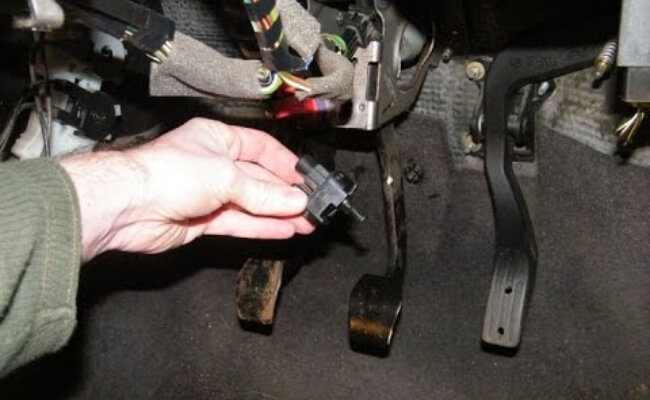
Locate the switch for your brake pedal, typically found under the dash near the pedal. Ensure that the switch is fully depressed when the pedal is released. Replace the brake switch if it is defective to restore normal brake light operation.
Also Check:
- Top 7 Motorcycle Waxes for Ultimate Protection.
- Top 7 Older Trucks with Surprisingly Good Gas Mileage.
Alternatively, you can try adjusting the brake pedal switch to ensure proper engagement even after releasing the brake pedal.
2. Inspect The Brake Pedal Stopper
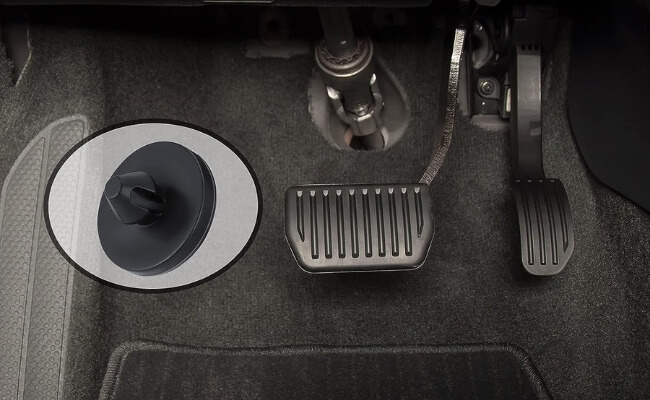
Another component to inspect is the brake pedal stopper. If it’s missing, carefully search the mat area where it might have fallen. If you find the stopper intact, you may be able to reattach it. However, if it’s broken into pieces, it needs to be replaced.
3. Check the Brake Pedal Spring
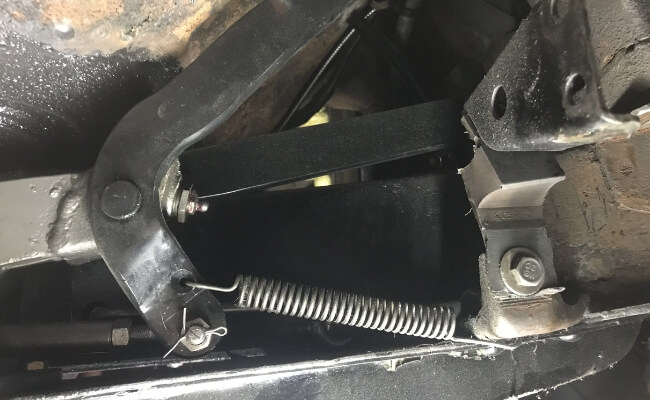
The brake pedal spring is located under the pedal. Kneel down on the driver’s side to get a clear view of it. The brake lights will illuminate if the spring has lost its tension and is unable to return to its normal position.
Using a pair of needle nose pliers, unhook the spring and replace it. After installation, check the brake lights to ensure the issue has been resolved.
4. Look for Corrosion or Debris
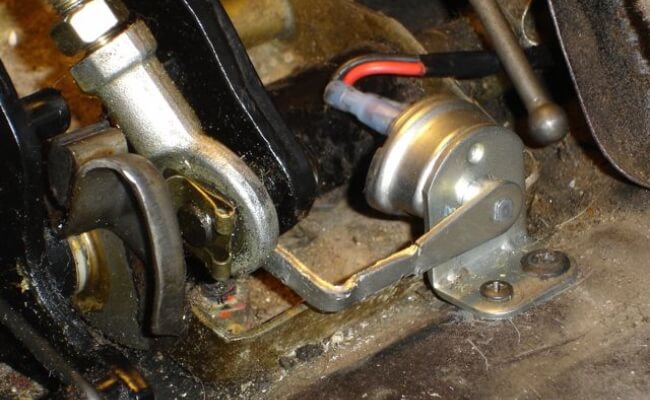
Various parts of the braking system can accumulate corrosion or become covered in debris. Even the smallest amount of debris can lead to issues. Check all brake lights, pedals, and lines between them for corrosion, leaves, dirt, or other contaminants.
5. Inspect the Electrical System
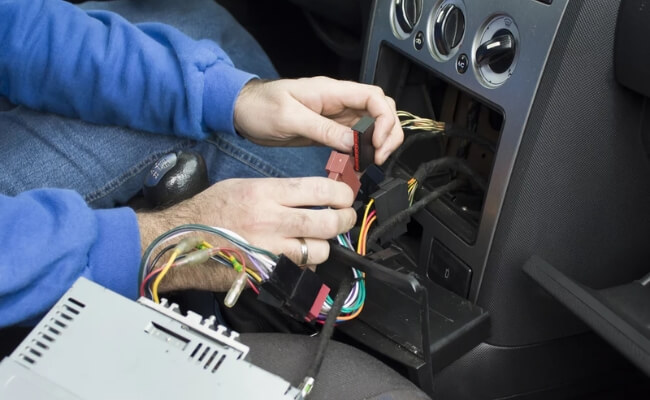
This is a more complex option and should be considered as a last resort. If there is an issue with the wiring in the braking system, it may cause unusual behavior in the lights.
If you have access to a service manual, you can follow the steps provided to check the wiring and connections. However, it’s important to note that this task should only be undertaken if you have extensive automotive knowledge.
Also, double-check the light bulbs in the rear to ensure that the correct type has been installed, as mentioned earlier in the article.
6. Consult a Mechanic
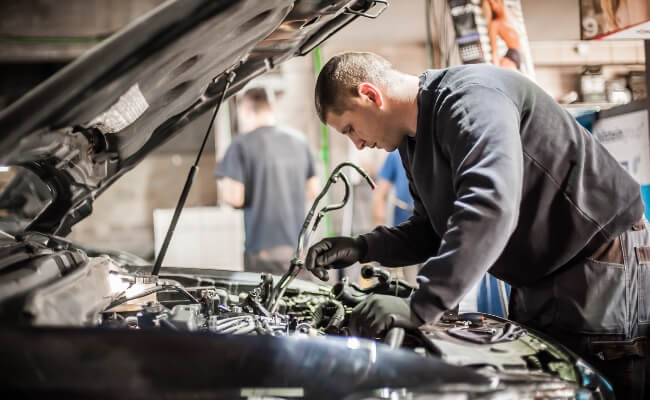
If all else fails, it’s advisable to take your car to a mechanic. We shouldn’t take chances with the braking system, even if the issue seems to be limited to the lights.
Not only can these lights confuse other drivers, but they can also cause excessive wear on your brake pads or rotors.
Additionally, there may be underlying issues that, if left unrepaired, could potentially leave you without brakes. Ensure your safety and the safety of others on the road by avoiding unnecessary risks.
Top FAQs About Brake Lights Stay On When Car Is Off
What To Do When Honda Civic Brake Lights Won’t Turn Off?
Small parts may sometimes make a major impact in the performance of our vehicles. The brake pedal switch bumper prevents the brake light circuit from joining until you depress the brake pedal. Without it, your brake lights stay on at all times.
Fortunately, you can turn off the Honda Civic brake lights by following these steps:
- Begin by visiting your local car shop and acquiring a replacement part. It shouldn’t cost more than $5.
- Now, park your car in a safe location and start the engine—but keep the handbrake on.
- With one hand, depress the brake pedal.
- Feel around with your other hand for a little hole at the back of your brake pedal.
- Fill the hole with your new brake pedal switch bumper.
- Firmly press the brake pedal switch bumper into place until it feels secure.
- Once it’s in the proper position, let go of the brake and let the bumper do its work!
- Your brake lights should be turned off at this point.
Why Ford Fusion Brake Lights Won’t Turn Off?
If your Ford Fusion brake lights won’t turn off, a recall may be able to assist. According to Ford, the brake lights may remain illuminated if the brake pedal bumper corrodes and separates from the brake pedal. The Ford brake pedal stop bumper aids in the activation of the brake light switch.
More than 199,000 model year 2014-15 Ford Fusion, 2014-15 Lincoln MKZ, and 2015 Mustang cars are being recalled if they were initially sold or ever registered in Texas, Louisiana, Mississippi, Alabama, Florida, Georgia, South Carolina, North Carolina, Virginia, or Hawaii.
What To Do When Honda Accord Brake Lights Won’t Turn Off?
You can usually rely on your brake lights to illuminate when you apply the brakes. But have you ever wondered what causes them to switch off? If Honda brake lights won’t turn off even after the car is off, the solution is basic and straightforward.
So, to avoid your brake lights from lingering on while the car is not turned on, follow this step-by-step tutorial.
- Step 1: Check the floorboard.
- Step 2: Hold down the brake pedal.
- Step 3: Replace the pedal stopper pad.
If you want a detailed guide you can refer to honda-tech.com to know more and in detail about the brake lights that won’t turn off in Honda Accord.
Is It Safe To Drive With The Brake Lights On?
Even though it may appear to be safe, driving a car with the brake light on is not. If you’re stuck in traffic and your brake lights remain illuminated, other drivers may not see you’re stopping, which might result in a rear-end collision.
How Much Does It Cost To Fix Brake Lights That Won’t Turn Off?
The cost of replacing a brake light switch is determined on the make and model of your vehicle. However, the components and labor for this repair will cost between $25 and $300.
If you are technically inclined, you may be able to change the switch yourself for the cost of the item, which normally varies from $25 to $100.
Why Are My Brake Lights Staying On?
A broken brake light switch or sensor is the most common reason your brake lights stay on. It may also be a result of a malfunctioning brake pedal or an electrical system failure.
If you had recently changed the rear light bulbs when the problem arose, you may have used the incorrect light bulbs.
Why Won’t My Brake Lights Turn Off?
A vehicle’s brake lights should always be in good working order. This protects you and other drivers on the road. While driving, the car behind you will notice the taillights. The brake lights employ a switch to indicate whether or not the lights are on.
The brake light switch is linked to the brake pedal. The circuit is finished when you use the brakes. When there is a circuit problem, the brake lights do not switch off or on. The cause might be anything from a damaged brake pedal to a complete circuit failure.
What Happens When One Brake Light Stays On When Car Is Off?
When one brake light stays on when the car is off, it typically indicates a malfunction in the brake light circuit. This can occur due to various reasons. It could be a result of a faulty brake light switch or a broken brake pedal.
Electrical issues within the system or incorrect light bulb installation can also cause this problem. It is crucial to have the issue inspected and repaired promptly to prevent battery drain and maintain optimal safety while driving.
Is It Illegal To Drive With Brake Lights Stuck On?
Yes. Driving with your brake lights illuminated is unlawful. If your brake lights are locked on, cars behind you will be unable to see when you are stopping, which might result in catastrophic accidents. So, if your brake lights are stuck on, get them fixed as soon as possible.
Final Thoughts
If your brake lights won’t turn off, it is essential to address the issue promptly. It poses a safety risk to both you and other drivers, and it may also be a violation of the law. Driving with constantly lit brake lights can result in significant fines if you’re pulled over.
Thankfully, if you possess basic mechanical and automotive electrical knowledge, you should be able to diagnose the problem using a multimeter. However, if you lack the necessary expertise, it is advisable to contact a mechanic without delay.







